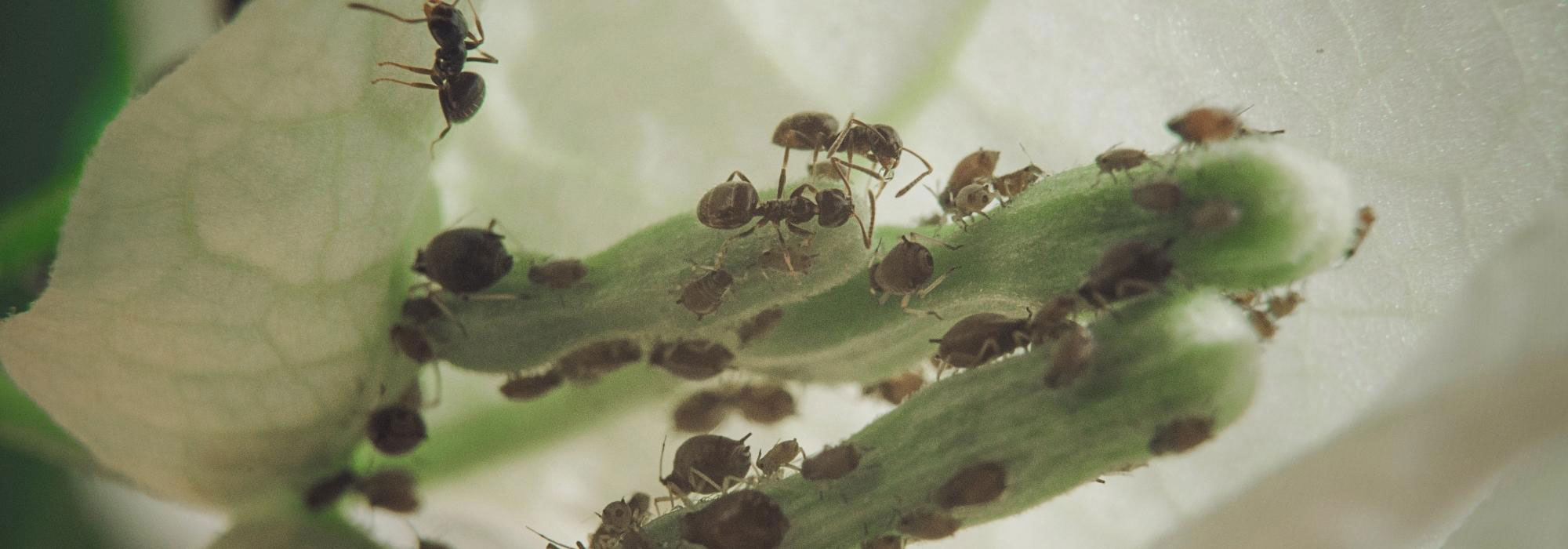
Diseases and pests of Bougainvillea
Recognise and address them
Contents
SOS bougainvillea! Is your usually beautiful bougainvillea looking sad? The one that used to bring you joy with its multitude of colourful flowers now resembles a still life…
Why are the leaves of the bougainvillea curling up like this? What are the diseases affecting bougainvilleas, and how can you treat a sick bougainvillea? If you have these questions, we are here to help you by reviewing the pests and diseases of bougainvilleas and advising you on natural remedies to address them.

Powdery mildew
Symptoms and cause
Powdery mildew is one of the main enemies of bougainvillea. Also known as white rot, it is caused by a fungal disease. The damage from powdery mildew generally begins around May, favoured by humidity, the arrival of heat, and greater temperature fluctuations between day and night. The first symptoms appear as white and grey spots on the leaves. They then become covered with a floury layer and eventually fall off… The entire plant can end up defoliating, putting its survival at risk.
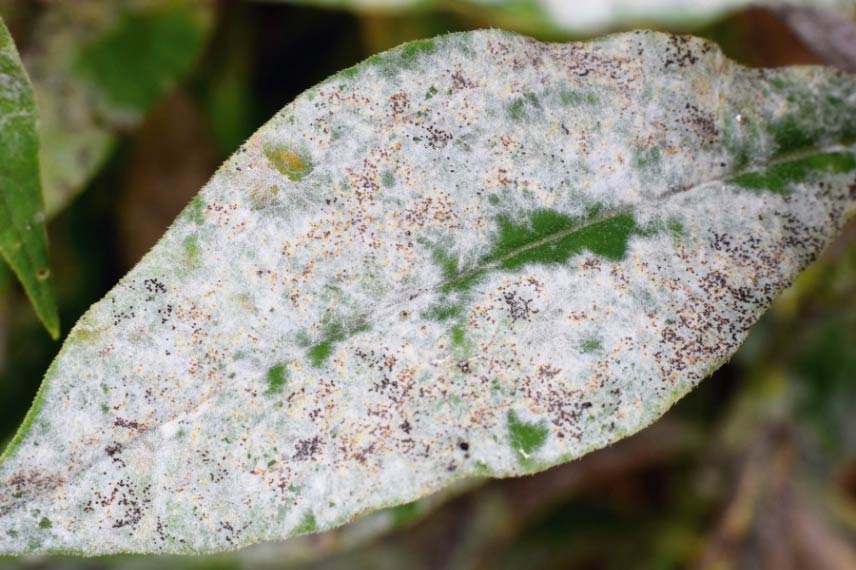 Leaf infested with powdery mildew
Leaf infested with powdery mildew
Treatment
If your bougainvillea shows symptoms of a powdery mildew attack, cut off the affected parts and dispose of them. Be sure to thoroughly clean and disinfect your cutting tools and wash your hands to avoid spreading powdery mildew to other plants. Then, you can apply natural fungicides such as:
- Baking soda
- Spraying skimmed cow’s milk mixed with water
- Garlic oil maceration
- Sulphur-based fungicide (less natural and more harmful to the environment than the previous remedies)
→ To learn more about treating powdery mildew, check our dedicated article: “Powdery mildew or white disease. Prevention and treatment.
To prevent the appearance of this fungal infection, leave enough space between your plants and prune them to promote air circulation in the foliar parts. Horsetail manure is also recommended as a preventive measure.
Scale insects
Symptoms and cause
Well known to gardeners, mealybugs attack a wide variety of plants. These pests, which are part of the sap-sucking insect group like aphids, rarely kill their hosts but can significantly weaken them and compromise flowering. They infest stems and leaves, with a preference for young, tender shoots that are well-supplied with sap. Furthermore, mealybugs can transmit viruses by producing honeydew, a sticky and sweet substance. This leads to the appearance of sooty mould, which is a black fungus, on the leaves.
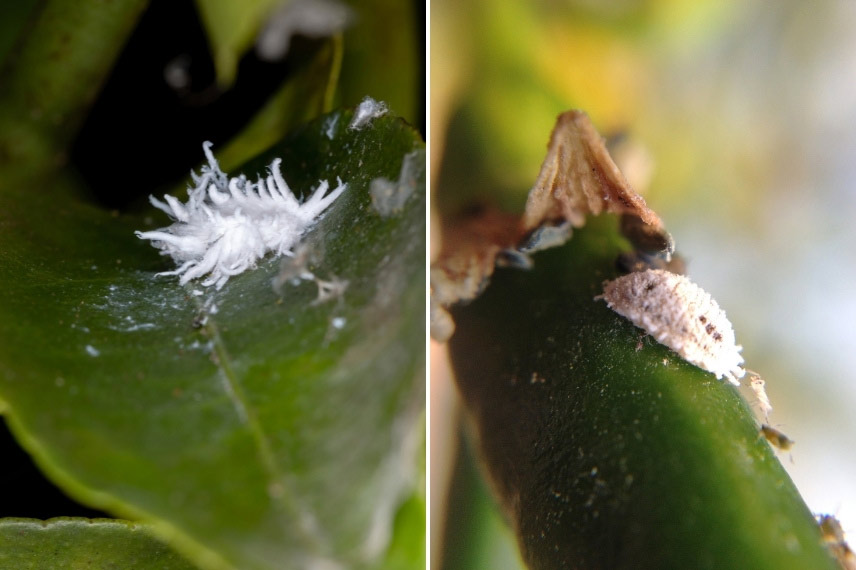 Plant infested with mealybugs
Plant infested with mealybugs
Treatment
To prevent the appearance of mealybugs, encourage biodiversity in the garden as much as possible. Natural enemies of these pests, such as ladybird larvae, will help regulate their population. They can also be purchased for biological control. Once the plant is infected, you can also use a treatment based on paraffin oil or treat the larvae with black soap. Insecticides should be avoided: in trying to eliminate mealybugs, you will also destroy valuable beneficial insects that are essential for maintaining a biological balance.
→ To learn more about treating mealybugs, check out our dedicated article: “Mealybug: identification and treatment. Our tips for natural and effective control”.
Discover other Bougainvillea
View all →Available in 0 sizes
Available in 3 sizes
Available in 1 sizes
Available in 1 sizes
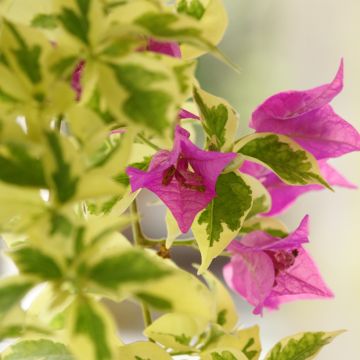
Available in 1 sizes
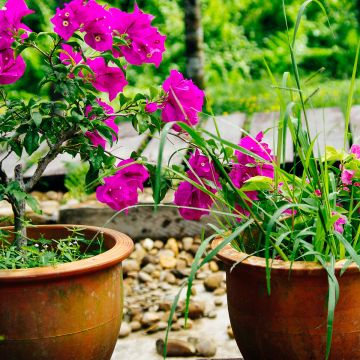
Available in 2 sizes
Available in 1 sizes
Available in 1 sizes
Available in 1 sizes
Aphids
Symptoms and cause
Just as well known to gardeners as scale insects, aphids can also attack your bougainvillea. The signs are unmistakable: you see the little pests infesting your plant, and often ants accompany them. Swarms of these tiny insects suck the sap from your beautiful climbing plant, causing the leaves to curl and eventually fall off. The growth of the plant is also affected, and sooty mould often appears as a result.
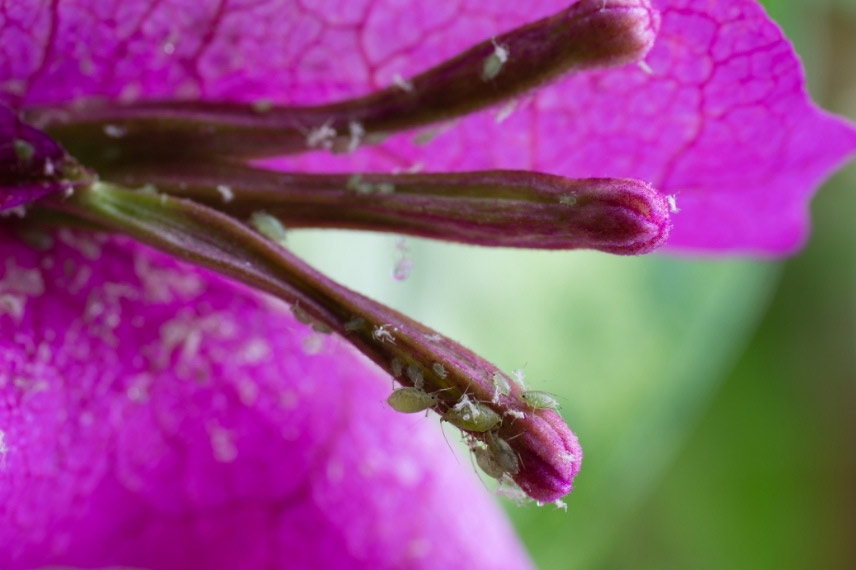
Aphids infest bougainvillea flowers
Treatment
Once again, promoting biodiversity and thus beneficial insects is a good method to prevent the proliferation of harmful insects. Leave as many natural areas in the garden as possible, install insect hotels, and avoid using chemical insecticides. You can order ladybird larvae to help control aphid populations.
→ To learn more about treating aphids, check out our dedicated article: “Aphid: identification and treatment. Our tips for natural and effective control.”
Read also
How to winter bougainvillea?Root rot
Symptoms and cause
Heavy, clay soils have the ability to retain water. If the soil at the base of your bougainvillea is too clayey, it will tend to maintain constant moisture around the roots during rainy weather as well as during watering. This phenomenon will suffocate the root system and induce rot caused by fungi. Your plant will gradually decline, and this could be fatal for it.
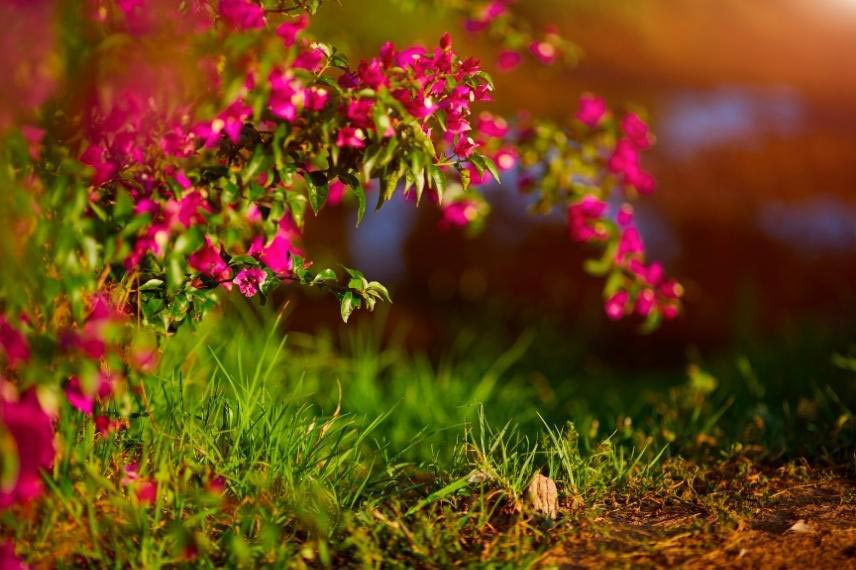
Bougainvillea can be prone to root rot
Treatment
At planting, first ensure proper drainage if your soil is heavy and compact: add small gravel, clay balls, or coarse river sand to the bottom of the planting hole. Avoid subjecting the base of your bougainvillea to constant moisture by planting it in the shade, which it will not appreciate for proper growth and flowering. If you water it, reduce the frequency of watering to allow the soil to dry between waterings.
Chlorosis
Symptoms and cause
Bougainvilleas prefer slightly acidic soil, with a pH between 5.5 and 6.0. If the soil or the watering water is too alkaline, your plant will show signs of chlorosis, meaning that photosynthesis cannot occur properly: the leaves discolour, revealing greener veins.
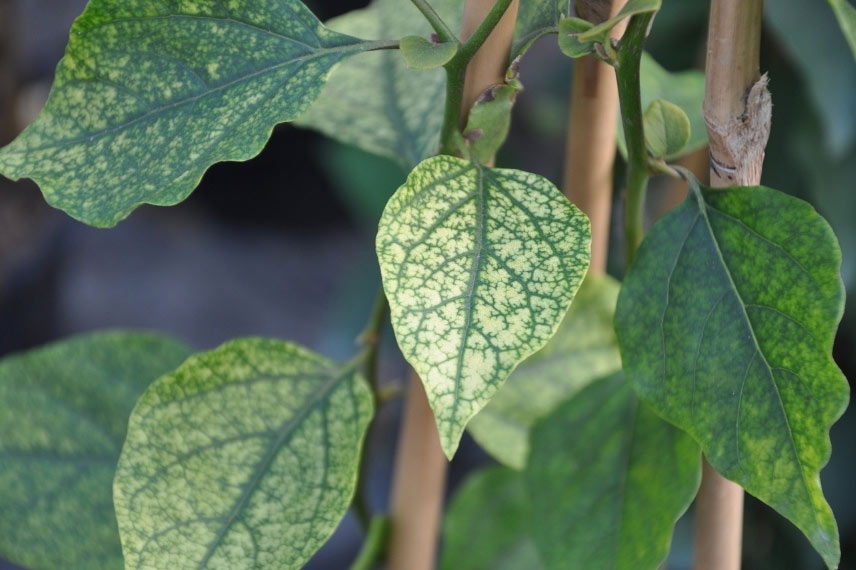
Leaf discolouration is a sign of chlorosis
Treatment
The remedy involves treating your bougainvillea with nettle manure, which will have an anti-chlorosis effect. There are also many anti-chlorosis treatments that will help your bougainvillea regain its colours and vitality!
To learn more about treating chlorosis, check our dedicated article: “Iron Chlorosis: prevention and treatment”
- Subscribe!
- Contents
































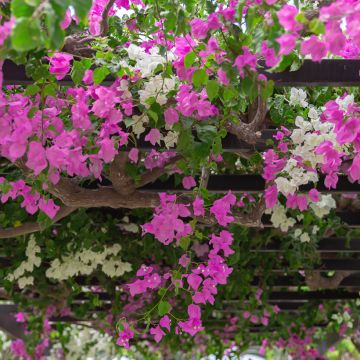
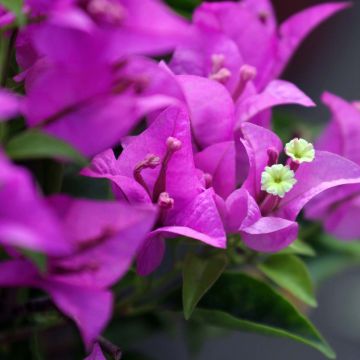


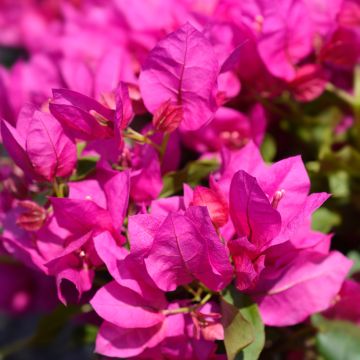


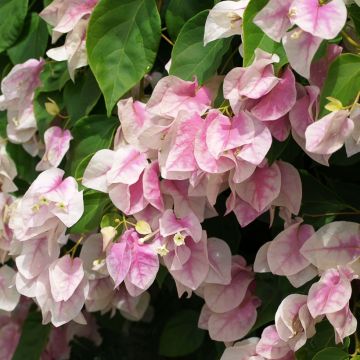
Comments